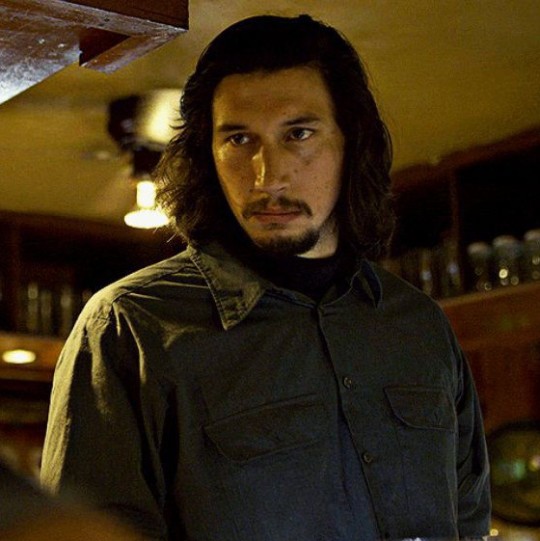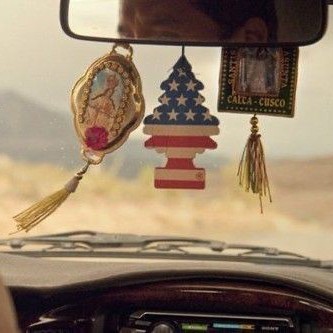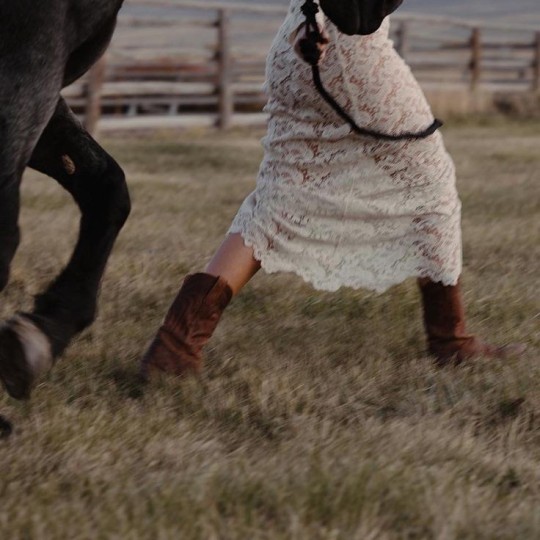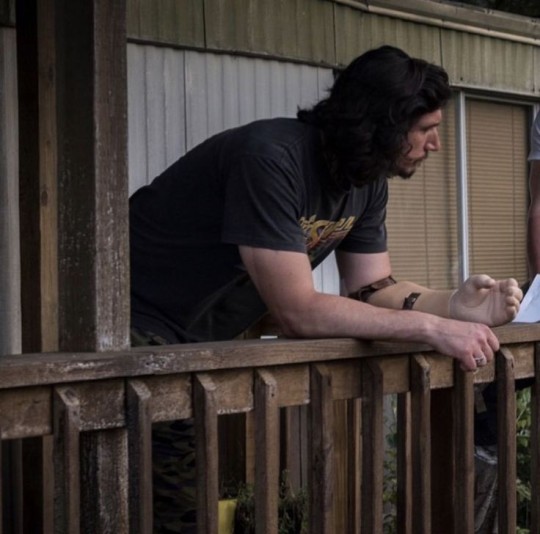Text
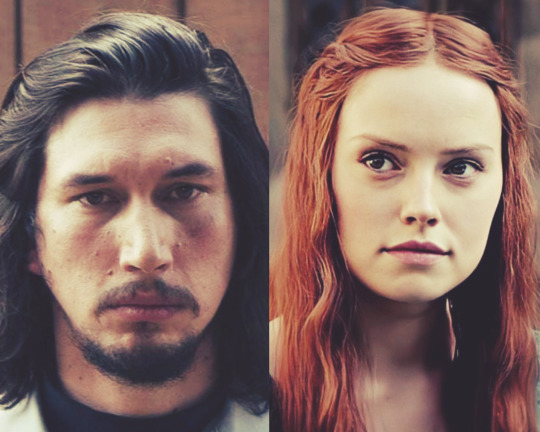

Clyde’s routine was repetitive, but comforting. The sound of the Duke Tape, the smell of beer, the slow, meandering conversations with customers — everything held a strange kind of peace. He liked it that way.
That is, until a beautiful redhead walked into the bar. Ophelia, with an easy smile and eyes that saw more than they let on, was looking for a job. Clyde nearly dropped a glass — and not because of his mechanical arm. His heart skipped a beat.
From that day on, he started measuring time by the moments she came near with a joke or a silly question. He called her Phee, softly, like a secret only he knew. She moved around the bar as if had always belonged there, and Clyde, like a fool, just watched.
Jimmy and Mellie noticed right away. The teasing followed, along with barely stifled laughter. Clyde, gruff and red as a tomato, couldn’t deny it: Ophelia was like sunlight breaking through a dusty window.
The final blow came when she tied her hair back with a red handkerchief forgotten beneath the counter — a keepsake from Clyde’s father. Phee wore it as if it were hers. And in that moment, it truly seemed to be... just like his heart.
After many glances and quiet pauses, Clyde finally mustered the courage to ask her out to dinner, stumbling over his words. He expected a maybe. He got — instead — a radiant smile and a kiss on the cheek.
“I thought you would never invite me...”
Behind the counter, Jimmy and Mellie peeked over, giggling at the two fools who had finally stopped dancing in circles.
And at the Duke Tape — a place where nothing much ever changed — a different kind of story had begun. Awkward, simple, and sincere — just like Clyde himself — all thanks to the lovely, sweet Phee.
For @mytbrisgrowing 🫶🏻
7 notes
·
View notes
Photo

YOU DO NOT UNDERSTAND THE LOVE I HAVE FOR FANFICTION WRITERS *eternally grateful for them sharing their amazing writing skills*
144K notes
·
View notes
Text
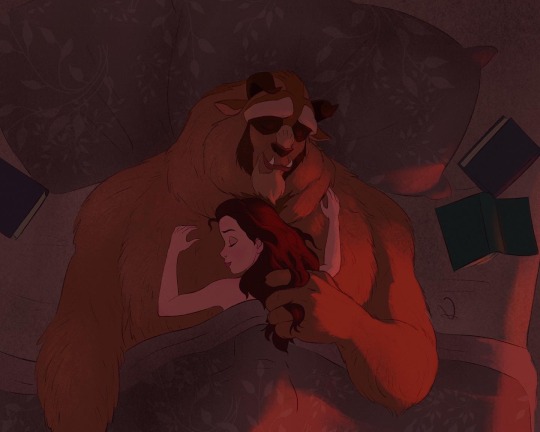
The Bookworm and her Fluffy Pillow
Commission.
3K notes
·
View notes
Text
“This character is dead in canon” to you. They’re dead in canon to you. To me they’re fine
111K notes
·
View notes
Photo


Mothman AU inspired by bb_kate_art and queso_en on twitter
816 notes
·
View notes
Photo

landscape with a blur of conqueros by @kylorenvevo
1K notes
·
View notes
Photo






“Eternal peace will come to her.”
2K notes
·
View notes
Note
Do you think that Rey's story (excluding episode 9 'cause that was a shitshow) could be interpreted as a Cinderella/Ash girl story?
I hope you realize asking me this is like throwing chum to a shark 😈. But the short answer is yes, to a point.
The long answer is more complicated, so to begin with, let's consult the Cinderella bible:
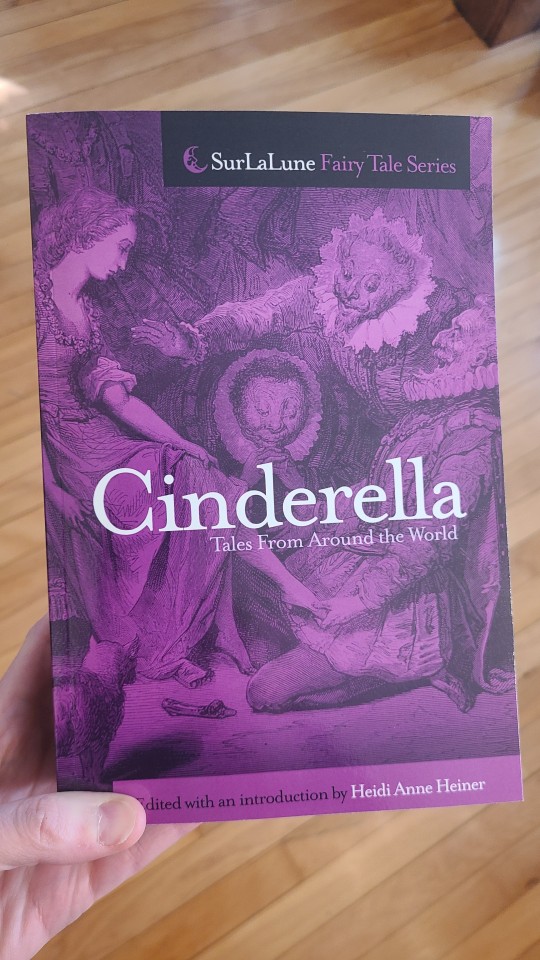
According to the Aarne Thompson Uther Index, there are five primary motifs to a Cinderella tale:
Persecuted heroine, usually by family
Help or helper, usually magic
Meeting the prince, usually with true identity disguised
Identification or penetration of disguise, usually by means of an object
Marriage to the prince
Rey is abandoned by her family, which is a form of persecution, and harassed by the inhabitants of Jakku like Unkar Plutt. Thus she clearly fulfills the first item.
As for meeting a helper, there are several for her, including Han Solo, Maz, Luke, and Leia. Any or all of these may be considered fairy godparents in the way that they offer her wisdom and material help. Further, except for Maz, they all die in the course of the story, which is consistent with many Cinderella tales in which the helper dies and their bones continue to offer wisdom and comfort to the heroine.
Next, meeting the prince. I mean
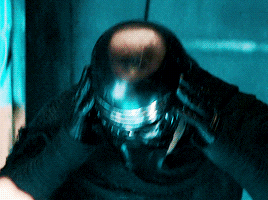
To the extent that Rey is "in disguise' here, it would be the extent of her force powers, her destiny as Ben Solo's dyad mate, and her role as the heir apparent to the Jedi (chosen by the Force to wield the legacy saber), all of which are obscured from Kylo Ren when he discovers her in the forest. Further, she is grimy and covered in desert sand, similar to how Cinderella is smeared with ashes that hide her true beauty.
So now an object penetrates the disguise. This is obviously the Skywalker lightsaber, which reveals Rey to be everything listed above, especially when she calls it to her on Starkiller Base, and again when she wields it on Ahch-to.
And lastly, marriage to the prince. As many others have pointed out over the years, Rey and Ben have almost too many symbolic marriages to count in the course of the sequel trilogy. They're extremely married, the Force said so.
BUT WAIT! Go back and look at that list again. Who ELSE fits all those criteria?
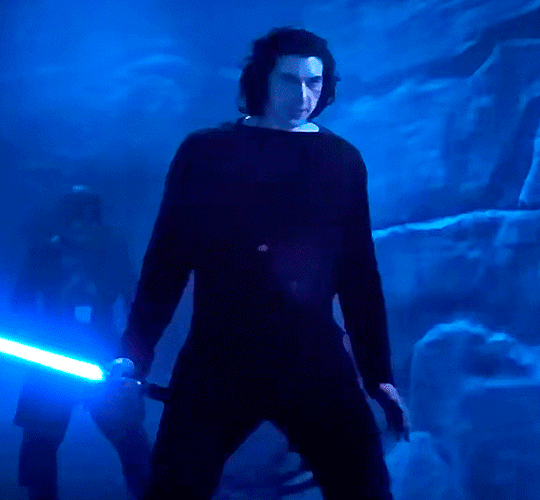
It's our boy! Consider:
He is indeed persecuted by family, most notably when Luke momentarily considers killing him.
Ben's helpers are both dark and light, as Snoke/Palpatine guide him in the dark while Luke guides him in the light (poorly). But note again what I said above about the bones of the mentor continuing to offer guidance and comfort after their death. Who should appear at Ben's lowest hour but his departed father, Han Solo? With a message of love, acceptance, and encouragement, Han's memory (because in fairy tales, bones contain memory) encourages Ben to at last cast off his beastly skin and become who he always was.
Next, meeting the prince/ss in disguise. He's wearing a literal mask when he meets Rey, so yeah.
An object penetrates the disguise? Rey slashed his face with the legacy saber, thus symbolically peeling away his mask. And I've argued before that the stabbing in TROS (which I still HATE, btw) is another cutting or burning away of the beastly skin.
And lastly, marriage to the prince/ss. As previously stated, that happened. Many times.
So yes, the Sequel Trilogy can definitely be considered a Cinderella story, with but one glaring issue: Cinderella's husband usually doesn't die at the end. But that's another topic that's been done to death, so let's all just read some more fanfic and forget about it. 👑 Thank you for the ask, this was fun!
105 notes
·
View notes
Text
Star Wars Music on Instagram Challenge!
There is an Instagram page I absolutely adore called @starwarsmusic - I highly recommend following this account. The owner of the account decided to do a Music Analysis Writing Competition, so of course I want to participate!!


The above piecess are the ones that are off limits. I have decided to analyze & write about “THE SPARK” from THE LAST JEDI.
youtube
Hey @ashesforfoxes by the way, am I right you wanted a meta on this scene??
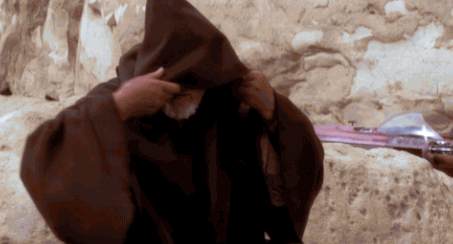
This is an absolutely incredible scene as we all know, and the music adds so much to the storytelling through JW’s careful and brilliant layering & transitioning between key themes. The cue begins with dark, menacing low strings and a mournful, plaintive line on the bassoon, as Connix & D’Acy tell Leia that the signal has been received, but no one is coming. Leia processes this information - “We fought til the end” - as beautiful low horns play a stoic theme appropriate for her acceptance of the situation. It comes to a resolution as she says “The spark…is out…”
Yet almost immediately after saying this, and hearing the theme on the horns resolve, something changes in Leia’s expression and body language. Immediately as her eyes lift, sensing Luke’s presence through the Force, the music also shifts, questioning woodwinds leading to shimmering harp, slightly dissonant woodwinds, and a beautifully mysterious line in the high strings underscoring Luke’s dramatic, hooded entrance.

As we see Luke’s face, there is a brief statement of The Force theme in its classic French Horn instrumentation, which almost immediately transitions into the classic “Luke & Leia” theme from Return of the Jedi. Here, the theme is played in gorgeous rich, warm tones by the cellos - it sounds like a human voice, and sits beautifully underneath their dialogue, supporting it without intruding upon this heart-wrenching moment. It’s delicate, but the theme is so incredibly evocative and emotional that the scene needs nothing else. The phrasing is expertly done so that the theme fades away as they reach their hands out to touch. There is then a beautiful little piece of transitional scoring in the strings. and a moment of emphasis on Luke’s eyes - we don’t realize it until a moment later, but this is when he is putting the dice into his sister’s hands.
The music seamlessly transitions into Han Solo & The Princess, or Han and Leia’s love theme. I tear up every single time I watch or listen to this moment - “no one’s ever really gone.” Bringing the theme associated with Han back at this moment immediately underlines the fact that Luke isn’t just talking about Ben Solo, but reminding Leia that the good and beautiful things about her husband live on in their memories, and in her son as well.

The music shifts again after Luke kisses Leia on the forehead, beginning a march-like rhythm and three note rhythmic motif that may sound familiar, due to the descending minor third (giving us Imperial March/Vader’s Theme vibes.) You’ll notice that this shift happens while the camera is still lingering on the shot of Luke and Leia together, framed by the light behind them. It DOESN’T change on the cut - how on the nose would that be! It’s much more dramatically interesting to start this new theme and new direction of the drama as though we are inside’s Luke’s head, as he has said goodbye to his beloved sister and is ready to perform his final act of heroism, bravery and sacrifice.
As Luke leaves the cave and begins walking out to face Kylo and The First Order, the theme is traded off throughout the orchestra as the rhythm becomes more subdivided, dynamics increase, and tension mounts to an almost unbearable level, with Kylo Ren’s shuttle hovering menacingly and Imperial walkers lining up. One of the most iconic shots of the entire movie is punctuated by a piercing moment of high strings and swelling brass, before the relentless rhythm returns.

Alex Ross, music critic for The New Yorker, lists this moment as his favorite from The Last Jedi.
“After giving Leia a souvenir of Han Solo—another wordless exchange, conducted via leitmotif—the ostensible Luke marches out onto the salt flats of the planet Crait, which, in one of the film’s many inspired visual strokes, turn crimson red when stepped upon. Williams is no minimalist, favoring quick harmonic motion in his music, but here he fixates on an F-minor chord, with a three-note figure—F, C, A-flat—ricocheting around the orchestra. When Luke inexplicably survives an all-out Imperial barrage, the motif returns, banged out on the timpani. The dramatic soprano Christine Goerke was not the only person who thought here of the Agamemnon figure in Richard Strauss’s “Elektra.” Agamemnon haunts that opera from beyond the grave; likewise, Luke is not actually present on Crait, instead appearing by long-distance Force projection. All that darksome, epic music is swirling in Kylo Ren’s conflicted mind.”
Everything about the music in this cue is precise and intentional, yet it is the skill and mastery of John Williams on full display that makes it all feel so natural and inevitable, as if there was no other music that could have ever existed accompanying this highly significant scene in the film. It’s truly one of my favorite moments of musical drama that JW has ever blessed us with.
238 notes
·
View notes
Text
The Search for the Lost Husband: Reylo as Eros and Psyche

As a relative latecomer to the Reylo fandom (but a lifelong Star Wars fan), I’ve enjoyed learning about all of the mythological, psychological, and artistic background of the Sequel Trilogy and the Skywalker Saga as a whole. The story draws on SO much great material that honestly it’s a bottomless treasure trove of analysis. In particular, there’s a lot of emphasis on Greek mythology (Hades and Persephone), classic fairy tales (Beauty and the Beast), and Jungian psychoanalysis. What’s interesting to me is that all of these actually point to a single source, the myth of Eros and Psyche.
I’ve been a collector of finely illustrated children’s books since I was a kid, and among my collection there is the gorgeous Kinuko Craft version of Cupid and Psyche, two versions of East O’ the Sun and West O’ the Moon (my favorite is the P.J. Lynch one), and one copy of Pajaro Verde (The Green Bird). When reading them, I realized that they were all the same story, and furthermore that they seemed to be the basis for many other famous stories. But it wasn’t until I started to notice the parallels with Reylo that I began digging deeper, and discovered that these stories are part of specific classification of folktales known as “The Search for the Lost Husband.” In the Aarne-Thompson-Uther Classification of Folk Tales, this is ATU 425, containing a number of subclasses that encompass all the tales already mentioned and many more from around the world. Eros and Psyche is considered the original version of this folktale, and it is furthermore the basis of a great deal of psychological theory, especially as relates to consciousness and gender.
Before we get into the specific parallels, I want to state a few caveats: first, I am NOT declaring that any of these examples were deliberate on the part of the filmmakers. It’s possible, of course, but the thing to remember about mythology is that it’s embedded into our cultural consciousness: we are saturated in these stories and motifs from childhood, which is why the visual medium of film can rely on one shot to communicate so much. Artists KNOW that we will subconsciously recognize the princess in the glass coffin, the legacy sword, and the castle in the wood. Those choices are easy to make because they are part of a shared vocabulary; they don’t have to be deliberate callbacks to ONE intact narrative. Second, these parallels do not necessarily occur in the same order in each story. I’m not looking to shove any square pegs into round holes here: I’ll call out comparisons where I see them, but they may or may not follow the same timeline or serve the same role in the plot. And finally, I am not critiquing anyone else’s analysis or saying mine is right. I welcome disagreement and discussion, so feel free to let me know if you think I’m pulling sh*t out of thin air.

Like most Greek myths, Eros (or Cupid) and Psyche first evolved as part of an oral tradition, but the story we recognize today is from Metamorphoses or The Golden Ass, written by Lucius Apuleius in the 2nd Century AD. “The Marriage of Cupid and Psyches” is actually a story within a story: it’s an oral tale recited by an old woman to a group of frightened captives, to encourage them. The story spans Books 4-6 within the larger tale, and this will be the primary source I refer to for comparison, though I’m also going to note common variants like East O’ the Sun and West O’ the Moon, Pajaro Verde, and The Enchanted Snake (an Italian version).
The first thing I want to point out is the title: this is a story about a marriage. Though a formal wedding doesn’t take place until the end of the story, Eros and Psyche are referred to throughout the text as husband and wife after their first sexual encounter. Most of the folktale variations treat the relationship the same way, but the children’s books I have all present these relationships as chaste romances in which the couples marry and presumably consummate their union at the end. This is important because, as has been often pointed out, marriage symbolism is ALL OVER the Sequel Trilogy, so from a mythological perspective, Rey and Ben Solo are a married couple. Hence, the name of the folktale type: “The Search for the Lost Husband.” But Lucasfilm/Disney is telling the children’s book version, so there’s no actual sexytimes, just HEAVILY IMPLIED sexytimes.
Keep reading
629 notes
·
View notes
Text
The Death of Love and the Lonely Soul: Eros and Psyche in a Post-TROS World

This is the first of my follow-up posts to my series on Folktale Types in Star Wars, focusing on how the Sequel Trilogy retells (or fails to retell) the Eros and Psyche myth, and the potential psychological implications for our culture. This essay will frequently reference my original Reylo as Eros and Psyche post, though I will also occasionally refer to my other Search for the Lost Husband posts (2) (3) (4), so please consider reading those before diving in here.
To explain why I had a great deal of confidence in TROS being a classic happy ending to a Search for the Lost Husband tale (ATU 425), I have to share a little bit of what I learned about how folklorists view these tale types. A century ago, the popular theory about why myths and folktales were so similar all over the world was evolutionary: it assumed there was one origin tale, and that as humans traveled, they would carry the story with them and it would be retold and adapted by other cultures. This suggested there was one ancestral tale from which all the others developed, which accounted for the recurrence of the story’s basic plot and motifs.
Since then, however, advancements in anthropological research and the increasing appreciation for folklore in the study of human psychology has debunked the old evolutionary theory. It was discovered that cultures and societies existing at the same time in history, on opposite sides of the globe and which could have had no possible contact with one another, still told the same tale types with the same motifs. Details might be changed, but every culture had animal husband tales, or animal bride tales, and so on. This led to the now widely-accepted idea that universal human psychology accounts for the similarity in folktales. Basically, all humans tell each other the same stories because we all wrestle with the same fundamental truths, challenges, and transitions. This is why the swan maiden tales can be traced to male anxiety over sexual performance or the prospect of losing a wife in childbirth, or why animal husband tales can be traced to female power fantasies of taming a mate in a patriarchal society.

Based on all this, I assumed that even if Terrio and Abrams made a typically vapid modern action flick, they’d still hit all of the main beats of the Eros and Psyche myth because that’s what would come naturally to them. Obviously, Beauty’s love will return the Beast to his human form. Obviously, Psyche will complete her journey from child to adult and take her place as the true or metaphorical mother to the next generation. Obviously, they will end the story united for eternity to signify the end of the galaxy-wide conflict and the beginning of the true peace so long sought by the heroes of the Skywalker Saga.
While this was true to a limited extent in The Rise of Skywalker, several of the reveals and the final moments of the film not only departed dramatically from the structure of the Search for the Lost Husband myth, but the movie even fails to align with the commonly more sorrowful Quest for the Lost Bride. In a cruel and baffling twist, the story erases its hero and returns its heroine to childhood in a barren underworld. There is, frankly, no historical folktale I can find that matches this pattern. Even stories featuring preadolescent children are about disassociation from parental figures, not deeper dependence. (Note: Marie-Claire and Ty Black of What The Force and Wit and Folly have done some exploration of how TROS reflects the so-called “American Monomyth.” This is a valid interpretation but for the purposes of this analysis, I’m continuing to use stories more commonly recognized by the Aarne-Thompson-Uther classification of folktales.)
Rey’s Regression and Psyche’s Tasks
As a quick refresher of where we stood in alignment with the myth by the end of The Last Jedi, Rey is the mortal woman Psyche, and her force powers are akin to Psyche’s beauty in the myth. Kylo Ren/Ben Solo is god of desire Eros, Psyche’s husband and the son of god of war Ares and goddess of love Aphrodite. In Star Wars, it is the Dark Side and dark force users who play the part of Aphrodite herself, attempting to control Ben Solo and jealous of the powerful Rey. The symbolic marriage of the lovers has unmistakably occurred multiple times, but when Rey attempts to force Ben into the light and to accept his true identity, he recoils and they are separated. She has broken the taboo of seeing his true self, and so her animal bridegroom has fled to the safety of the Dark Side, or “his mother’s house.” Finally, all of Rey’s illusions, help, and protections have been stripped away, so she must now learn how to rely on herself to obtain what she desires. When Rey discovers her own worth, independent of anyone else, she will achieve womanhood. When Ben Solo accepts his full humanity, both dark and light, he will achieve manhood. Together, they will reach adulthood.
Keep reading
452 notes
·
View notes
Text
Eric, looking after Ariel
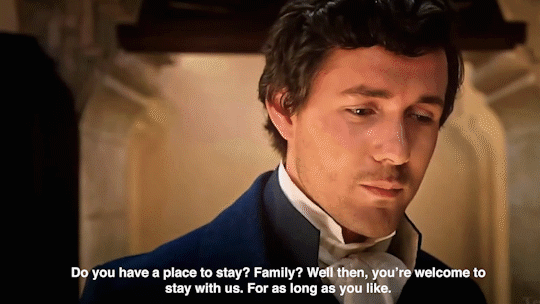
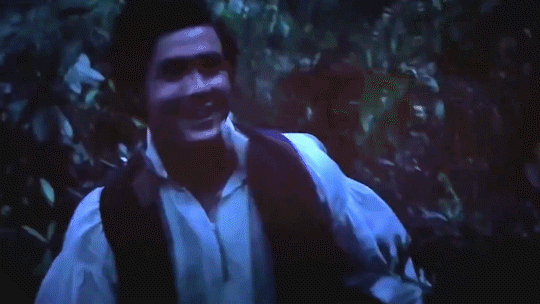

and of course,
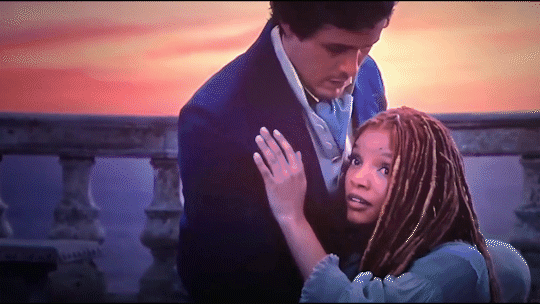
2K notes
·
View notes
Text
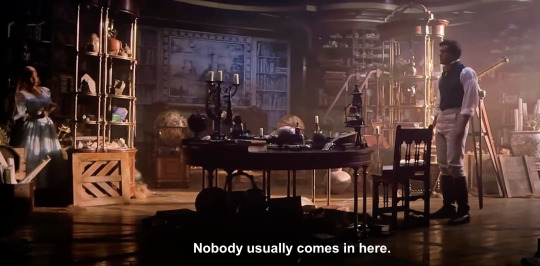
THERE WAS ONLY ONE CHAIR because presumably, the queen doesn't understand Eric's fascination & servants keep away out of respect for him. So, there's no use having chairs around since nobody hangs out with him here. The implication that he must've felt alone for years until, well, her. They're twin souls. I'm gonna sob in the corner real quick.
AND

This should not be applauded, but that mofo knelt on the floor afternoon 'till evening so she can sit (or not, she might be sitting on a box here) on the only comfortable seat in his library. like a fucking gentleman.
A prince on his knees, literally and figuratively. gddamn it, disney.
5K notes
·
View notes
Text

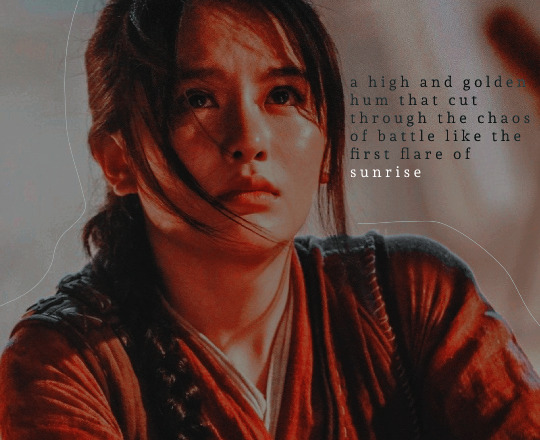
The Hurricane Wars - Book One - By Thea Guanzon (Fall 2023)
On opposite sides of a vicious war, a soldier who can channel light magic and a prince who summons shadows find themselves locked in a deadly dance that neither can seem to truly win. Goodreads Tumblr: @therestofyourstory
394 notes
·
View notes
Photo
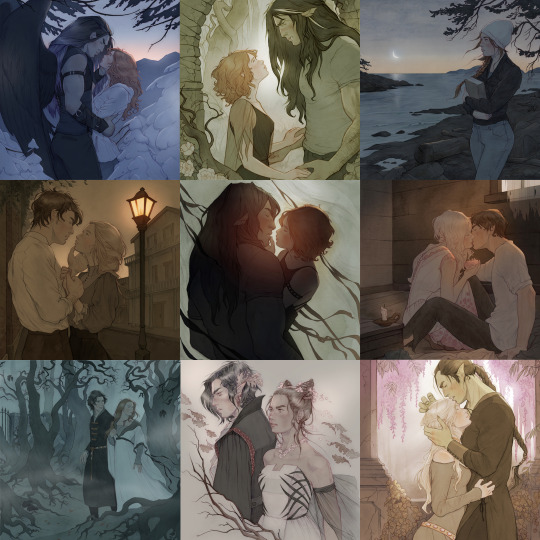
It’s the last day of the year and I’m too tired (lazy?) to make a 12-month art summary, so how about I just use the art vs artist one I did for instagram and swap out the centre image (who needs to see my face anyway). I didn’t make much fan art this year, but drew quite a lot of almost-kissing. Best wishes to everyone for 2023!
179 notes
·
View notes
